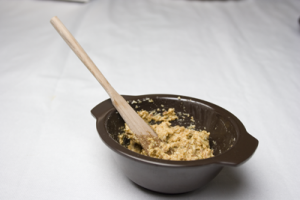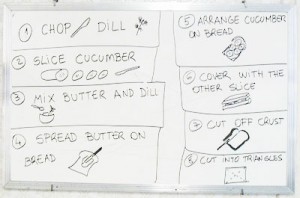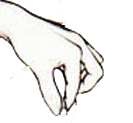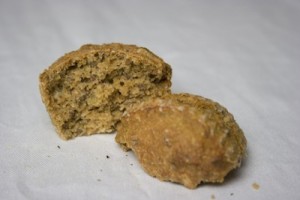Not from a box
Having just finished my Masters of Arts in Teaching, I am currently between school and work. Being summer and all, finding a teaching job in a grade school is nearly impossible. As a result, I oscillate between being discouraged and dedicating all the attention I neglected to direct at our home during the final months of my Masters: the floors are now always shining, the laundry is (almost) always folded in the drawers, the cars are washed whenever there is sun… But I still feel unproductive because I am not really helping with bills.
Two days ago, however, the light came through a suggestion from Hubby: “Why don’t you take this time and finish your book?”
The background
In 2003 I started teaching cooking to children in a bilingual school in Sao Paulo, Brazil. My students ranged from 4-12 years of age, and each lesson was planned with their abilities in mind, intellectual as well as physical.
 As I became more aware about the advantages of introducing the wonders of cooking in a learning environment, I grew increasingly serious about the materials I wanted to use. I designed a program that would evolve as children did, beginning with basic concepts such as pouring, stirring, adding, and recognizing simple ingredients such as flour, water, milk, sugar, etc., and evolving towards measuring and independently preparing the recipes. In 1st grade children were becoming familiar with the differences among chopping, dicing, and slicing, and developing the motor skills to perform each one of these safely. Second graders started to work more emphatically with pre-defined tasks in small groups, making sure everyone had the experiences as a reader, a leader, a measurer, a mixer, a washer and a fetcher before anyone repeated a task. In 3rd grade I guided children through more complex ideas, such as problem-solving how to divide the work or how to prepare a recipe that calls for 2 eggs when you have only 1 per group. The 4rth graders had the most autonomy of all: after learning about certain types of food they were asked to research, choose and prepare a recipe with their group, and we celebrated by sharing the results and voting their favorite.
As I became more aware about the advantages of introducing the wonders of cooking in a learning environment, I grew increasingly serious about the materials I wanted to use. I designed a program that would evolve as children did, beginning with basic concepts such as pouring, stirring, adding, and recognizing simple ingredients such as flour, water, milk, sugar, etc., and evolving towards measuring and independently preparing the recipes. In 1st grade children were becoming familiar with the differences among chopping, dicing, and slicing, and developing the motor skills to perform each one of these safely. Second graders started to work more emphatically with pre-defined tasks in small groups, making sure everyone had the experiences as a reader, a leader, a measurer, a mixer, a washer and a fetcher before anyone repeated a task. In 3rd grade I guided children through more complex ideas, such as problem-solving how to divide the work or how to prepare a recipe that calls for 2 eggs when you have only 1 per group. The 4rth graders had the most autonomy of all: after learning about certain types of food they were asked to research, choose and prepare a recipe with their group, and we celebrated by sharing the results and voting their favorite.
In every grade, understanding the ‘genre’ recipe was key and, right next to safety and hygiene, it took the center of the stage often at the beginning of each class. I insist that students read the whole recipe from beginning to end before engaging in the cooking. Besides practicing reading, this habit prevents cooks from starting a recipe and having to run out of the house mid-cooking to buy some ingredient they are short of. Also, it gives the chance to clarify doubts before reaching the point of not knowing what to do with that yeast that is not ‘foaming’.
The role of recipes in my classes
 Working with all levels of students, and different levels of readers, I learned to differentiate language as well as layout of the recipes I offered them. After researching a lot, I realized cookbooks written for children are actually written for adults to cook with children, or for very literate children.
Working with all levels of students, and different levels of readers, I learned to differentiate language as well as layout of the recipes I offered them. After researching a lot, I realized cookbooks written for children are actually written for adults to cook with children, or for very literate children.
Since the kind of cooking I wanted to offer was not the ‘kid friendly let’s decorate a box cake with candy’ kind, but rather the ‘let’s learn something healthy and culturally worthy’ kind, I needed reading to be a tool rather than a challenge.

I began using the internet to find images, and often times I drew my own pictures – especially the ones referring to actions – using the very limited drawing programs available to me at the time. I added the pictures to the recipes and left the instructions or ingredients list as subtitles to my beginning readers, and used fewer illustrations as the age and the reading ability advanced.
Now about the book
I am not precisely sure of when I became passionate about the process of learning to read and write. Books were dear friends in my adolescence, but I remember always having books around as a younger child. I remember being read to, and enjoying pictures of specific books. Despite that, not everyone who has good personal experiences with reading and writing becomes an advocate for literacy.
Maybe my ability to speak different languages and my firm notion that the language we speak is directly related to the way we experience the world and build our thoughts also plays an important part in my strong feelings about the importance of fostering literacy from a young age.
More than any of the above – or more as a consequence of both – I believe that the ability to produce and to decipher print, as well as the recognition of its uses and its value, brings enormous freedom and autonomy, which are the core of my teaching philosophy. I chose to be a teacher to help children become lords of themselves, directors of their own scenes, chefs of their own kitchens.
One of the ways I can do that indirectly – meaning, not being in the classroom with each and every child – is by writing a book that will allow them to practice autonomy, mathematics, science, and early literacy skills while they prepare their own food from scratch. Not from a box.

Response to "Not from a box"
Okay, here’s something rellay needed: A recipe book for people who raise gardens and do home canning or freezing.Recipes should use sizes such as pints or quarts rather than a can from the store that might be any size. And no ingredients should be listed as a box of this or package of that. Use only actual measured amounts.I’ll buy several if you do it right.